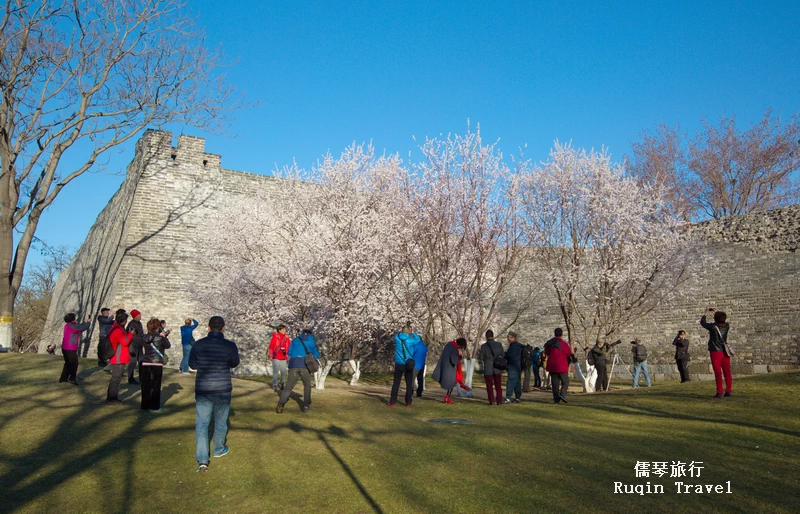A hidden gem in Beijing, the Ming Dynasty Wall Relics Park, also known as the Beijing Ming City Wall Ruins Park, offers a fascinating glimpse into China’s rich history. Located in the heart of Beijing, this park is not just a place for leisurely strolls; it’s a journey back in time.
In this guide, we’ll uncover the historical significance of this site, highlight its key attractions, and provide tips to help you make the most of your visit. Whether you’re a history buff, a culture enthusiast, or simply looking for a quiet escape, this park is a must-see. . Ready to step into history? Let’s dive in!
1. History of Beijing as Capital City: A Timeline of Transformation
Beijing’s story as a capital city spans over 800 years, each era leaving its own mark on the city’s character and skyline. From its humble beginnings to its status as the political heart of China, Beijing’s evolution is nothing short of remarkable. Here’s a look at how the city transformed through the ages:
Jin Dynasty: The Humble Beginnings
Over 800 years ago, during the Jin Dynasty (1115-1234), Beijing first emerged as a key political center. Back then, it was known as “Shangdu,” and later “Zhongdu.” In 1151, the city expanded significantly, setting the stage for what would become a grand capital. This early growth marked the beginning of Beijing’s rise in importance, but the best was yet to come.
Yuan Dynasty: A New Capital Takes Shape
The Mongol conquests of the 13th century brought profound changes. Under Kublai Khan, the city was renamed “Dadu,” meaning Great Capital. During the Yuan Dynasty (1271-1368), Beijing underwent major reconstruction, with a new layout built around the stunning Shichahai lake district. The Mongols’ vision of a prosperous city began to take shape, but Dadu was still only a glimpse of Beijing’s full potential.
Ming Dynasty: The City’s Golden Age
The Ming Dynasty (1368-1644) was Beijing’s true coming-of-age. After the Ming army conquered Dadu, the city was renamed Beiping, or “Northern Peace.” But it wasn’t until 1406 that the Ming emperors set about transforming the city into a grand imperial capital. The construction of massive city walls, gates, and palaces began in earnest, and by 1420, Beiping was officially renamed Beijing—Northern Capital. This era saw the construction of some of Beijing’s most iconic landmarks, including the Forbidden City, the Temple of Heaven, and the imposing city walls that once encircled the city.
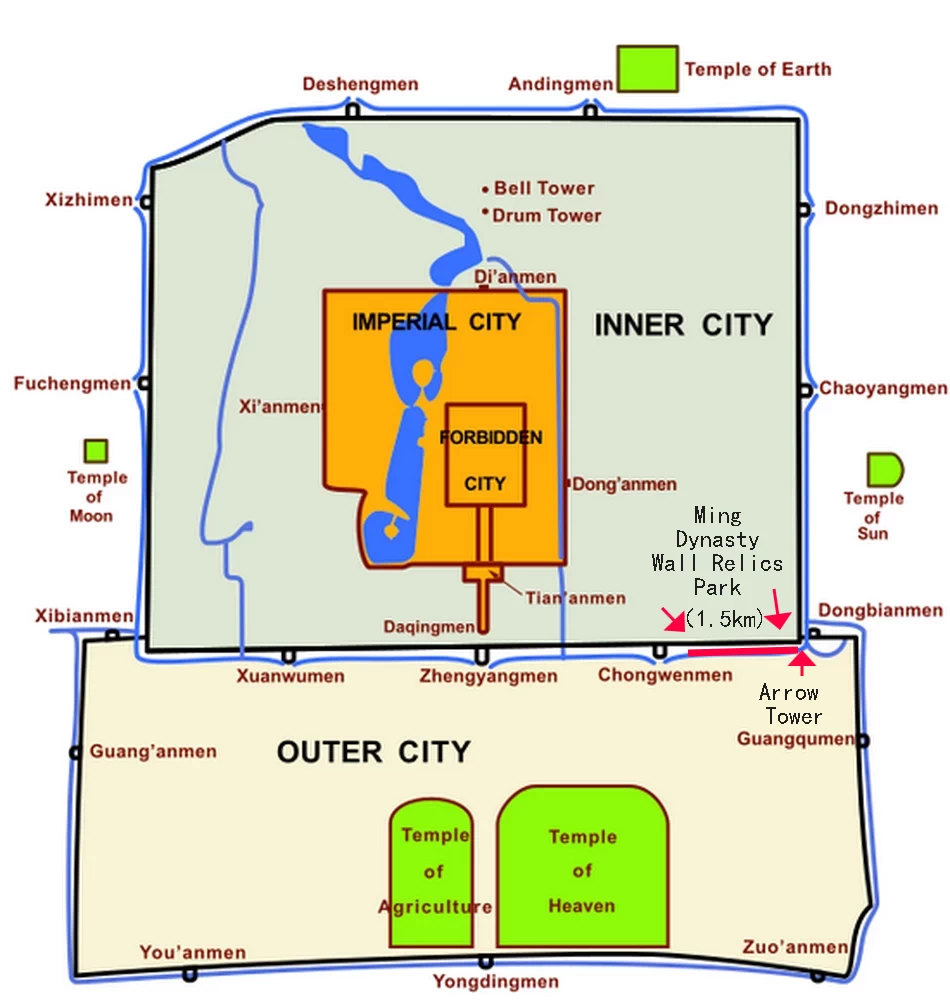
Qing Dynasty: A Legacy Preserved and Expanded
When the Qing Dynasty (1644-1911) came to power, they largely preserved the grand structures left behind by the Ming emperors. But the Qing didn’t just maintain Beijing’s legacy—they enhanced it. The Qing emperors built beautiful suburban gardens, most notably the Yuanmingyuan (Old Summer Palace), adding an extra layer of elegance to the city’s already impressive architectural landscape.
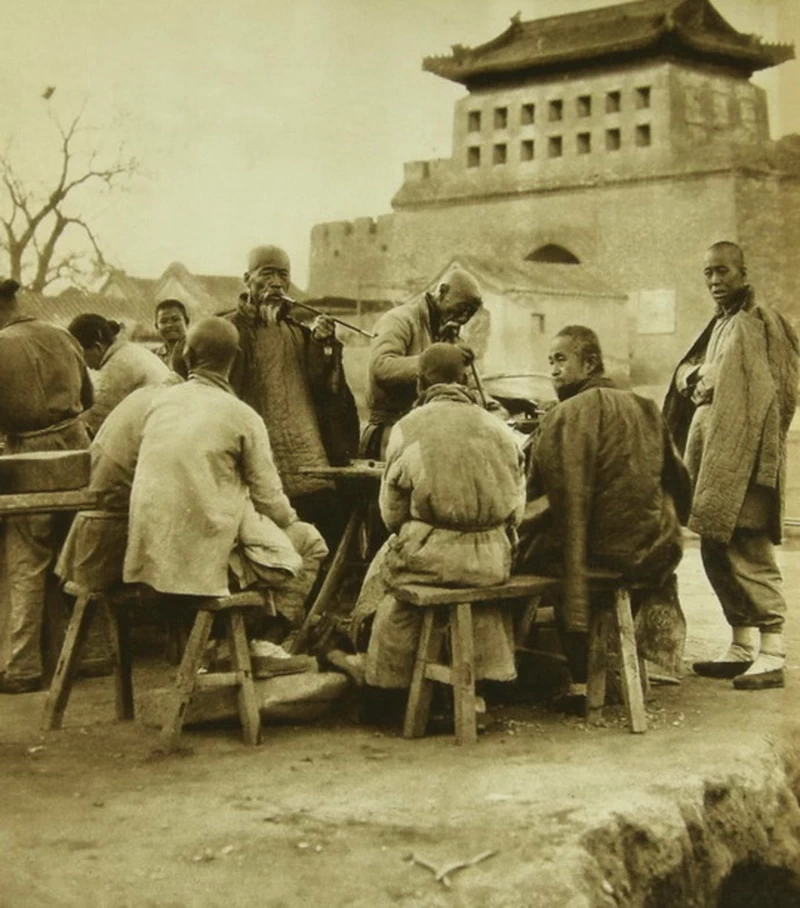
Through the rise and fall of dynasties, Beijing evolved into the magnificent city it is today—one of the world’s great capitals, steeped in history and culture. Each era has left its mark on the city, and the Ming Dynasty Wall Relics Park is one of the many places where you can experience this rich legacy.
2. Things to Do in Beijing Ming City Wall Ruins Park
The Beijing Ming City Wall Relics Park stretches about 1.5 kilometers from the southeastern corner of the city wall to Chongwenmen in the west. This remaining section of the original Beijing city wall is all that’s left of the once grand structure that surrounded the inner city. Built in 1419 during the Ming Dynasty’s Yongle reign, the wall has stood for over 600 years. Originally, the inner city of Ming City Wall spanned 24 kilometers, but only this small portion remains, offering visitors a rare glimpse into Beijing’s ancient defenses.
For your visit, we recommend strolling the park from west to east. The park itself is free to enter, but you’ll need a ticket to climb the watchtower and explore the remaining city wall on the top. From atop the wall, you can enjoy panoramic views, visit exhibitions on the ancient city walls in Beijing. At night, the park takes on a new charm with its stunning nightscapes, making it a peaceful spot for an evening stroll.
1)A Stroll Along the 1.5km Ming City Wall
Walking along the 1.5km stretch of the Ming Dynasty city wall in Beijing’s Wall Relics Park is like stepping back in time. This well-preserved section offers a rare chance to connect with the past while enjoying the park’s peaceful atmosphere.
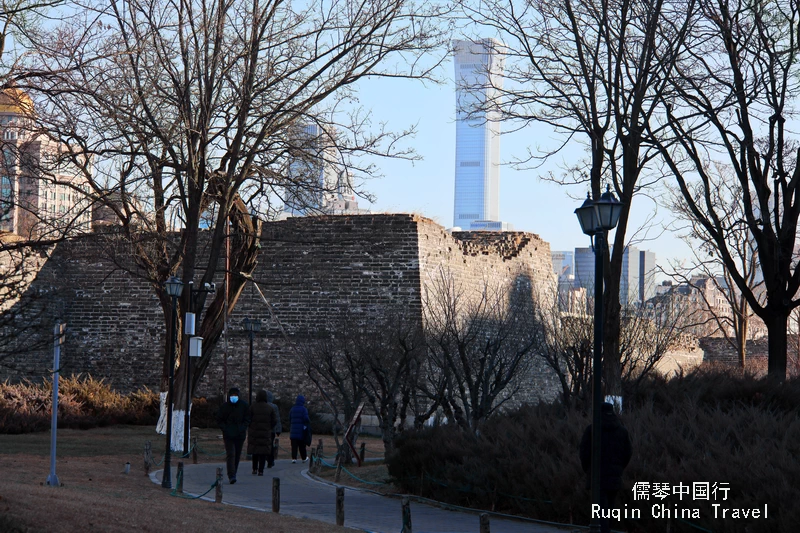
Originally part of a larger structure that stretched for 24 kilometers, it reflects the military strength and engineering skills of the time.
Standing 12 meters high and 10 meters thick at its base, the wall is an impressive feat of engineering. Along the way, you’ll find 12 terraces—strategic points where soldiers once kept watch. These vantage spots not only added to the wall’s defense but also provide great views today.
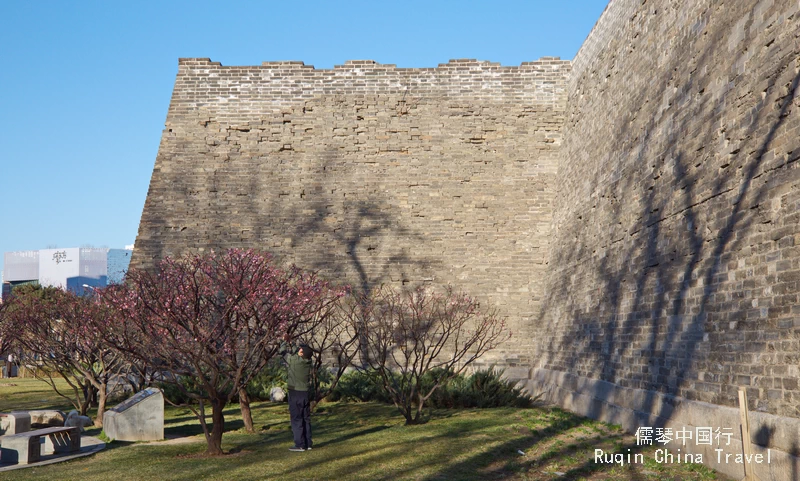
This historic wall is now part of a public park ( free of charge), offering a perfect blend of culture, nature, and leisure. A well-maintained path runs along the wall, ideal for a leisurely walk or a peaceful moment in the city. Informational plaques along the route provide fascinating details about the wall’s past.
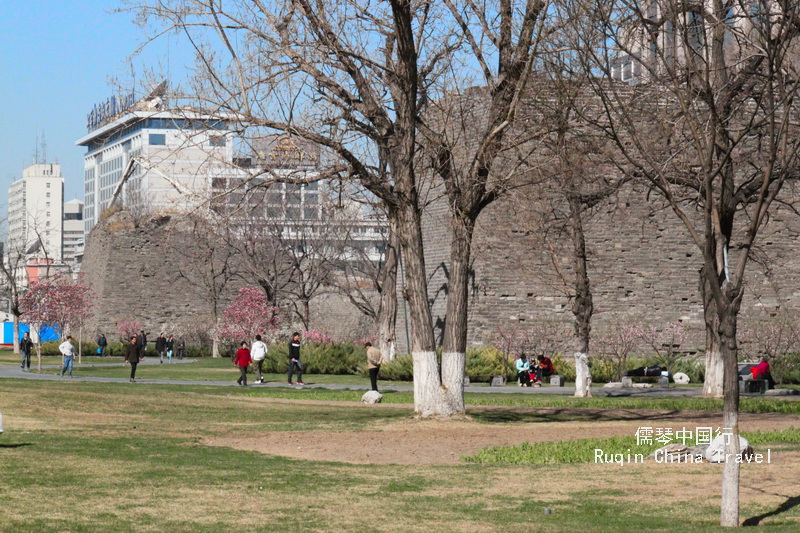
Wear comfortable shoes for a pleasant walk, and check the weather before you go. Whether you’re a history lover or simply looking for a relaxing spot, this stretch of the Ming Dynasty wall provides a unique and serene escape in the heart of Beijing.
2) Visit Southeast Tower of the Inner City (Arrow Tower)
The Southeast Tower, also known as the Arrow Tower, is one of the most striking features within the Ming Dynasty Wall Relics Park. Erected in 1436, this tower played a vital role in Beijing’s defense system during the Ming Dynasty. As part of the city’s ancient fortifications, it offers visitors a glimpse into the past while standing proudly in the park today.
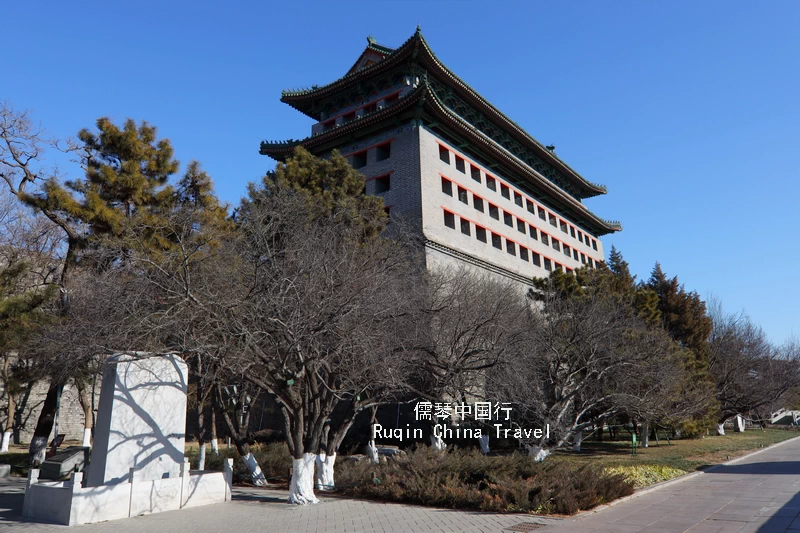
Visiting the Tower
Accessing the tower requires a small entrance fee of RMB 10. Once inside, visitors can climb a series of stairs, with ladders inside providing access to different levels. The second floor is home to an exhibition corridor that immerses visitors in the history of Beijing’s city gates.
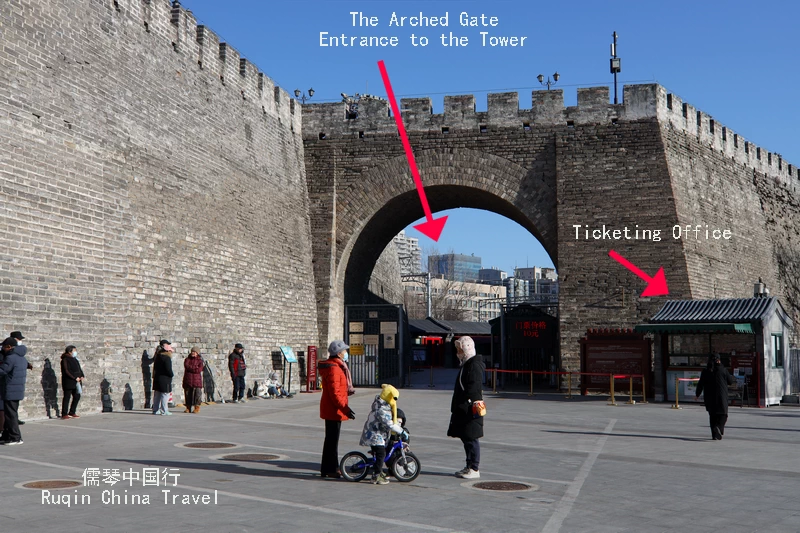
The tower stands at an impressive 29 meters, including its 12-meter base, making it one of the largest of its kind in China. Its two distinct eaves give it an imposing appearance, a hallmark of traditional Chinese military architecture. The tower also features 144 arrow windows, arranged for optimal defense. Inside, the vermilion-painted beams and posts represent traditional Chinese symbols of good fortune, adding to the tower’s historic charm.

The “Beijing City Wall and Gate Culture Exhibition” on the second floor is a captivating journey through time, transporting visitors back to ancient Beijing.
Beijing City Wall and Gate Culture Exhibition
This exhibition showcases detailed models of Beijing’s city gates, replicated in the style of the Ming Dynasty. The models depict the unique construction of 16 gates, including the grand Zhengyangmen (Front Gate) and the imposing Deshengmen (Desheng Gate). Each gate is brought to life with incredible detail, allowing visitors to fully appreciate the architectural beauty and strategic significance of these ancient structures.
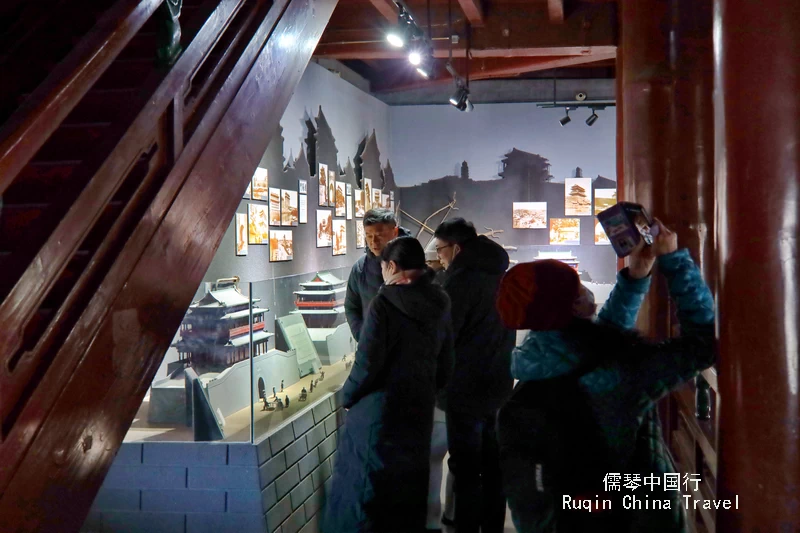
Alongside the models, historical photos and informative captions tell the fascinating stories behind each gate and its cultural significance. The exhibition is further enhanced by dynamic lighting and sound effects, bringing the ancient city walls and gates to life in a way that is both educational and immersive. It’s a perfect opportunity to deepen your understanding of Beijing’s rich history and the city’s evolution over time.
Panoramic Views from the Wall Top
Walking from the top level of the tower, you are on the top of the wall, where can enjoy breathtaking views of both ancient Beijing and its modern skyline. The surrounding area offers a unique contrast, with historical sites and contemporary buildings, such as the towering CBD and the China Zun—the tallest skyscraper in Beijing—creating a stunning juxtaposition of past and present.
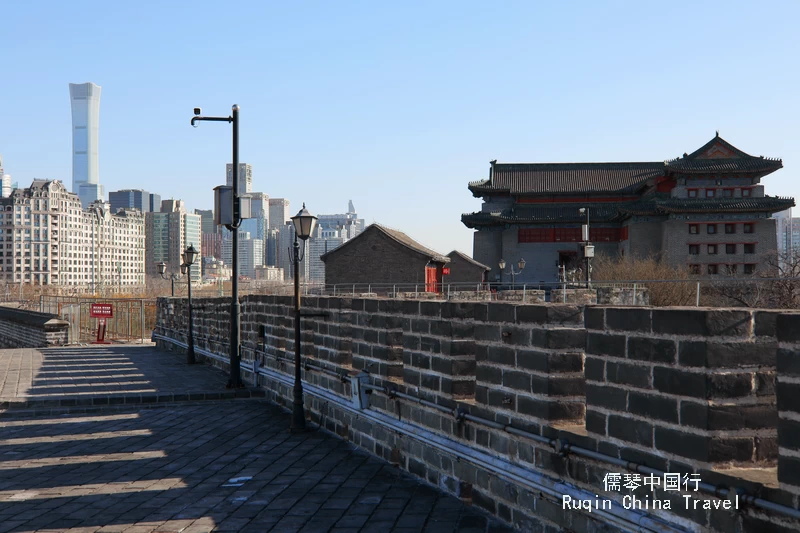
You’ll also be treated to the spectacular views. From the wall, you can see a blend of old and new Beijing—the city’s residential areas, the Beijing Railway Station. The high-speed trains zooming by further emphasize the city’s balance between history and modernity.
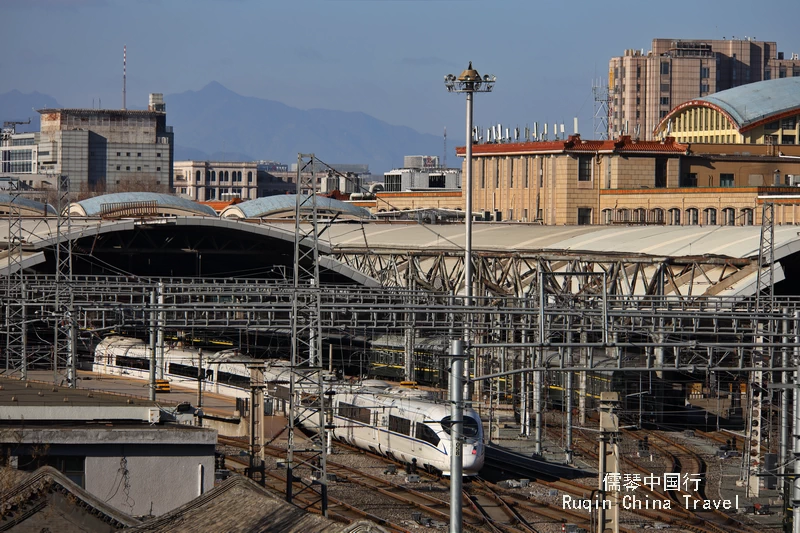
Along the wall top, you’ll encounter replicas of Ming Dynasty soldiers’ Pu She ( 铺舍duty houses) and historic cannons, adding to the atmosphere of the site. These Pu She were small houses where soldiers would stay during their shifts, similar to today’s duty rooms.
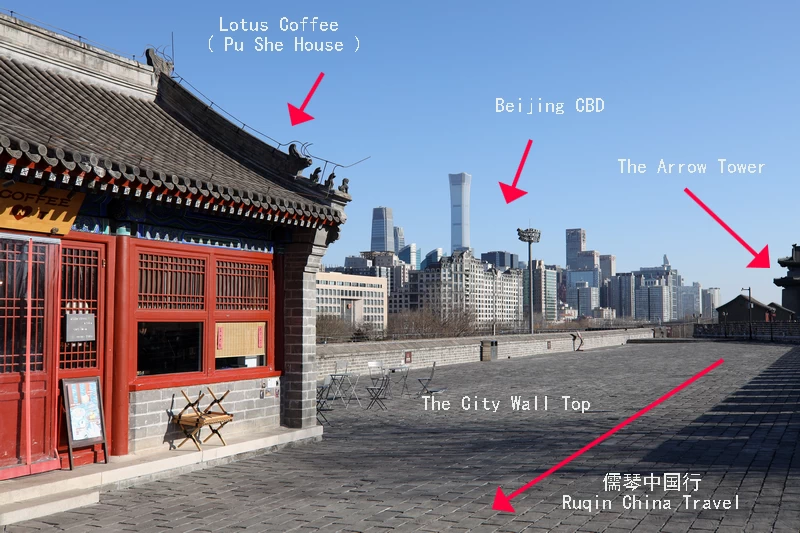
Today, one of these Pu She has been transformed into a charming café, Lotus Coffee, where you can relax, sip a cup of coffee, and enjoy the surrounding views of the city.
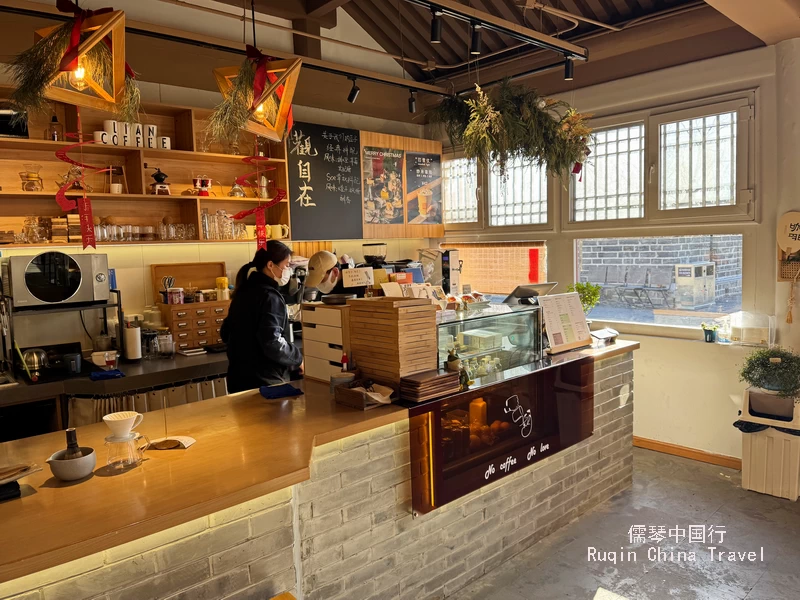
The city wall and the café offer the perfect spot to pause, reflect, and take in the ever-evolving landscape of Beijing. Whether you’re a history enthusiast or simply in search of a peaceful escape, this combination of ancient history and modern convenience provides a memorable experience.
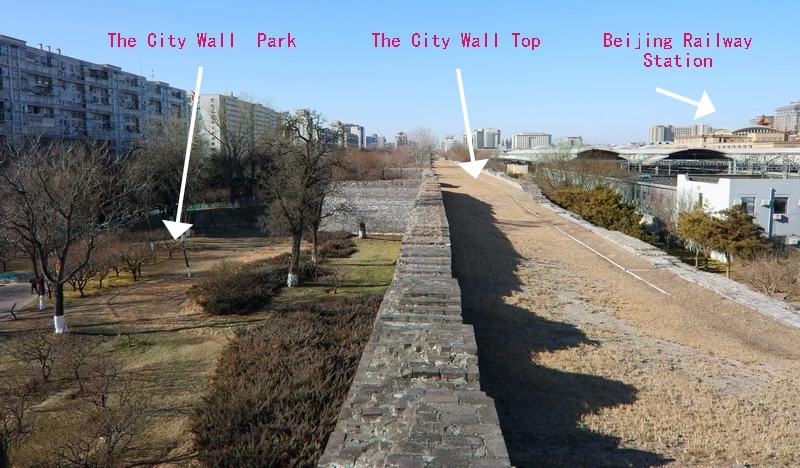
3) Plum Blossom Viewing: A Photographer’s Guide
The Ming Dynasty Wall Relics Park is a photographer’s paradise, especially during the plum blossom season. From mid-March to mid-April, the park bursts with color, drawing both nature lovers and photography enthusiasts. Here’s why plum blossom viewing in the park is a must for anyone with a camera.
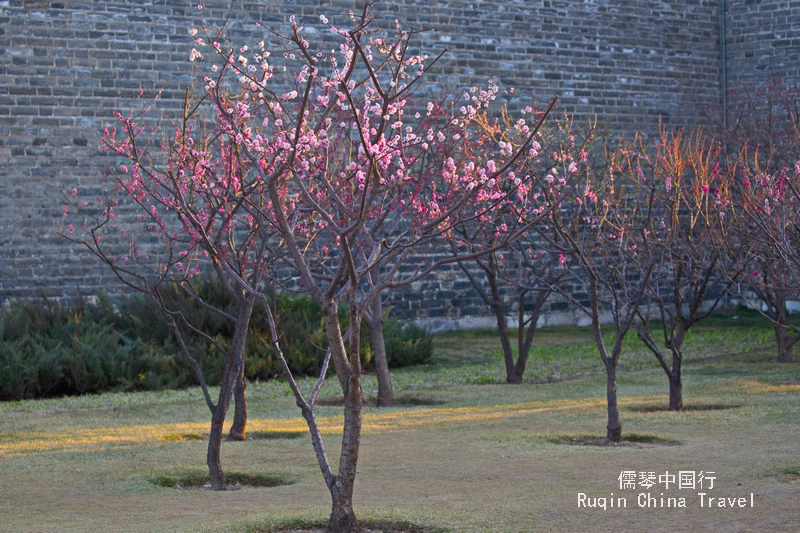
The Beauty of Plum Blossoms
The plum trees bloom for a brief period, filling the park with their delicate flowers. In Chinese culture, plum blossoms symbolize resilience and renewal, as they thrive even in the cold winter, signaling the arrival of spring.
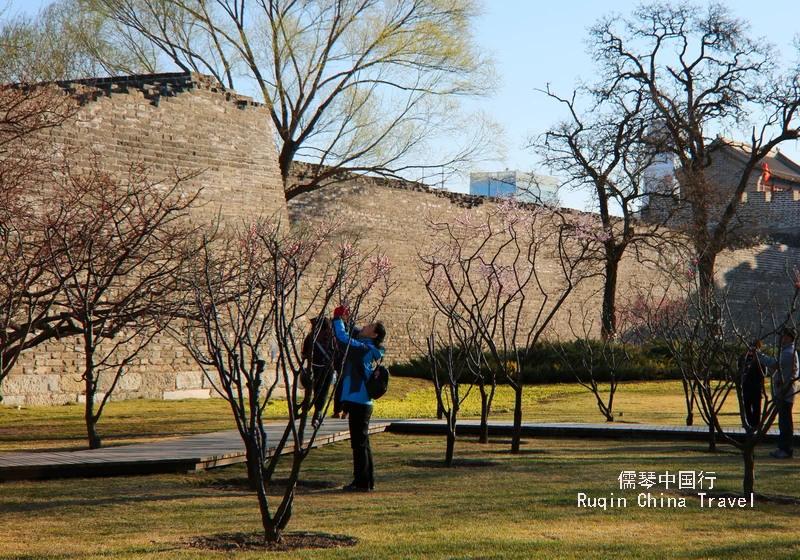
With around 1,000 plum trees, the park offers a stunning array of colors—from deep reds and pinks to pure whites and soft greens. This rich palette makes it a dream for photographers. The ancient city wall provides a unique backdrop, contrasting the vibrant blossoms with its weathered, historic structure.
Top Photography Spots
- Along the Wall: The 1.5km stretch of the city wall features several picturesque spots where the plum trees frame the wall perfectly.
- Near the Southeast Tower: The area around the tower offers one of the best views, where the ancient architecture complements the blooming flowers.
Planning Your Visit
- Peak Bloom: The best time to visit is from March 25 to April 5, when the flowers are at their most vibrant.
- Weather: Check the forecast to ensure good lighting for your photos.
- Weekday Visits: Try visiting on a weekday to avoid the weekend crowds.
Plum blossom viewing in the Beijing Ming City Wall Ruins Park offers more than just a beautiful scene—it’s a cultural experience blending nature’s beauty with historical elegance. For photographers, it’s a unique opportunity to capture the essence of spring in Beijing.
3. Park Tickets and Hours at the Ming Dynasty Wall Relics Park
The ticket prices for the Tower at the Beijing Ming City Wall Ruins Park are as follows:
Full-price ticket for the Tower : RMB 10 per person; Half-price ticket: RMB5 per person
The full-price ticket applies to all visitors, while the half-price ticket is available for:
Minors under 18; Senior citizens aged 60 and older; People with disabilities; Retired personnel; Active military members, police officers, firefighters, and rescue workers.
Note: The Park itself is free of Charge
Opening Hours
The park is open from Tuesday to Sunday, 8:30 AM to 7:30 PM. Last entry and ticket sales are at 7:00 PM, with ticket inspection stopping at 6:30 PM. The park is closed every Monday, except during public holidays when it remains open.
Make sure to plan your visit accordingly to enjoy everything this historic site has to offer!
4. How to Get to the Ming Wall Relics Park
Beijing Ming City Wall Ruins Park is easily accessible by a variety of public transportation routes, making it convenient for visitors to reach the park from different parts of the city.
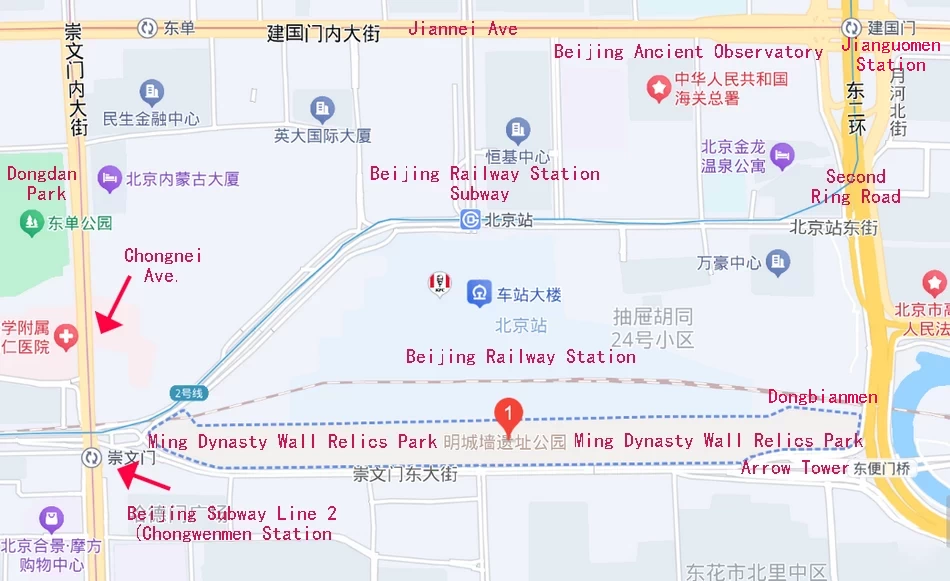
Subway and Transfer Tips
If you prefer taking the subway, hop on Line 2 and get off at Chongwenmen Station, Beijing Station ,or Jianguomen Station. From there, you can either walk or transfer to a bus for the final leg of your journey.
With the subway line 2, it’s easy to get to Beijing Ming City Wall Ruins Park.
Address: No. 9, East Chongwenmen Street, Dongcheng District, Beijing
5. Beijing Ming City Wall Ruins Park and City Walk
After exploring the historic Ming Dynasty Wall Relics Park, take a leisurely city walk to discover nearby attractions, blending ancient history with modern Beijing life.
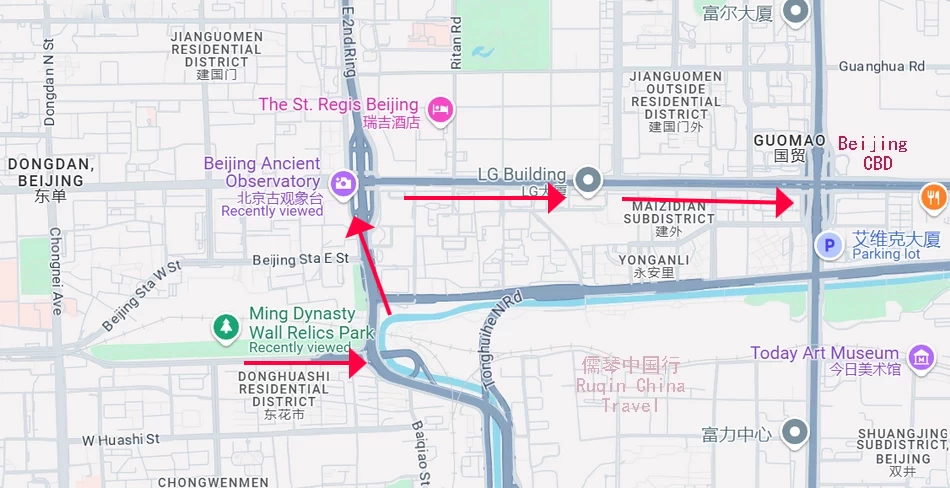
Start with the Beijing Ancient Observatory, just a short walk away. This fascinating site is one of the oldest astronomical observatories in the world, built in 1442 during the Ming Dynasty. For over five centuries, it played a pivotal role in China’s astronomical studies, offering insights into the stars and helping shape China’s understanding of the cosmos. As you explore, you’ll see ancient instruments and structures that tell the story of early Chinese science.
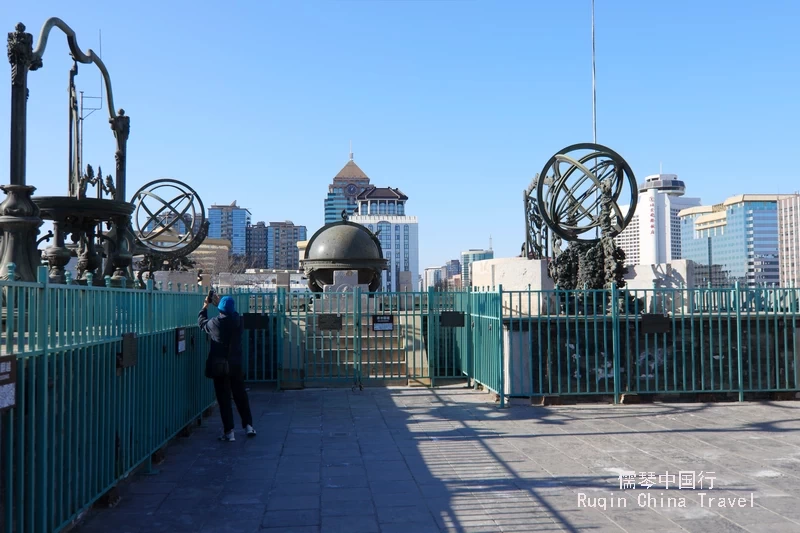
From the observatory, continue your walk towards Beijing’s Central Business District (CBD). This bustling area captures the modern spirit of Beijing. The CBD is a hub of commerce and innovation, with striking skyscrapers like the CCTV Headquarters and China Zun, the tallest building in the city. The contrast between the ancient and the modern is striking, offering you a perfect snapshot of Beijing’s evolution from an imperial capital to a thriving global metropolis.
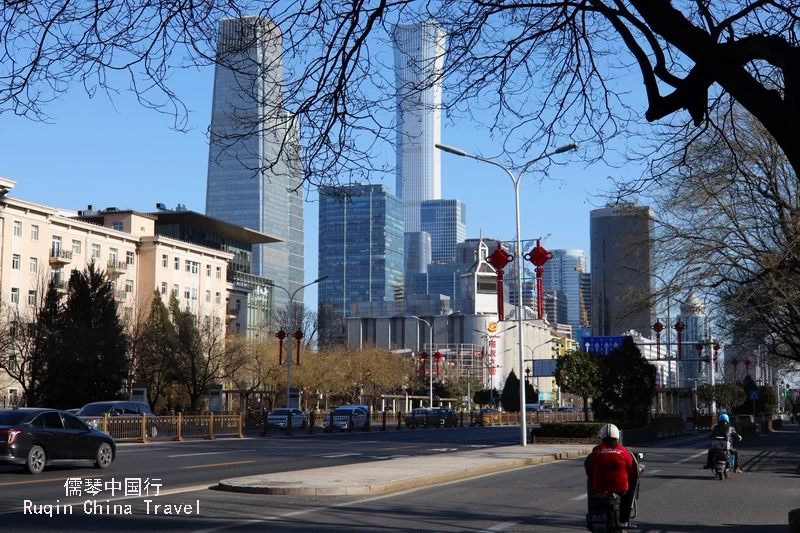
This walk is more than just sightseeing; it’s a journey through time, from the city’s ancient past to its vibrant, cutting-edge present. Whether you’re fascinated by history or energized by the modern urban buzz, this path offers something for everyone.
The Ming Dynasty Wall Relics Park is a unique treasure that allows visitors to step back in time and connect with Beijing’s rich history. From the ancient city wall remnants to the iconic Southeast Tower, every corner of the park tells a story of resilience and grandeur. Whether you’re a history enthusiast, a photography lover, or simply seeking a peaceful escape in the heart of Beijing, this park offers something for everyone.
More Beijing Travel Guides
Planning your Beijing tour? Our “Beijing Travel Guide“ section offers essential advice to help you navigate the city like a pro. From transportation tips and local customs to insider recommendations for hidden gems, these travel tips will ensure you have a smooth, enjoyable, and unforgettable experience in China’s vibrant capital. Let us guide you through the best practices for exploring Beijing with confidence!

